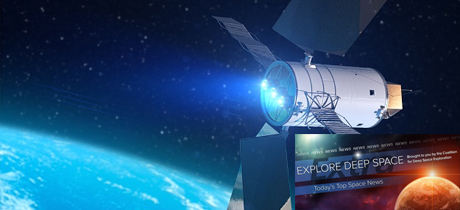In Today’s Deep Space Extra… The benefits of human space exploration include dividends for Earth. NASA begins testing of propellant storage tanks at the Kennedy Space Center for the Space Launch System (SLS) family of rockets.
Human Space Exploration
No, human space exploration is not a dead end
Coalition Member in the News (Lockheed Martin)
Washington Post (10/13): In an op-ed, Lockheed Martin chair, President and CEO Marilyn Hewson explains why the exploration of space is a crucial part of the nation’s future and why humans are vital to its success. “…the investments our nation has made in space exploration have yielded important benefits here on Earth,” writes Hewson. Lockheed is NASA’s prime contractor for the Orion crew module, which when paired with the Space Launch System (SLS) rocket will make possible a new era of human deep space exploration.
NASA fueling tests underway at KSC ahead of Space Launch System (SLS) debut
Florida Today (10/13): At the Kennedy Space Center’s Launch Pad 39B, the planned departure site for NASA Space Launch System (SLS) launches, tests of cyrogenic propellant storage tanks are getting underway. One of the spherical tanks is for liquid oxygen and a second for liquid hydrogen. The SLS is to start NASA Orion astronauts on future missions of deep space exploration.
Editorial: It’s time for America to stop staring at the pavement and aim for the stars again
Richmond Times-Dispatch of Virginia (10/14): “Exploring the unknown is part of who we are as humans. The advancements by China and Russia add a new sense of urgency to our renewed commitment to space research,” the Times-Dispatch notes in an editorial, which applauds the White House for re-establishing the National Space Council, whose chair, Vice President Mike Pence, said the U.S. will return to the moon with human explorers to prepare for Mars and other deep space destinations.
Ion thruster prototype breaks records in tests, could send humans to Mars
Space.com (10/13): The 100 KW test performance of an X3 Hall thruster prototype at NASA’s Glenn Research Center may offer a possible ion propulsion source for future human deep space exploration. Designers include the University of Michigan, NASA and the U.S. Air Force.
Space Science
NASA studying potential cooperation on Russian lunar science missions
Space News (10/14): NASA and Russia are discussing what the U.S. space agency might contribute to planned Russian lunar robotic missions, including one destined for a south pole sample return. The opportunities stretch from Russia’s Luna 25 through Luna 28. The prospect for U.S./Russian cooperation was discussed at an October 11 session of the NASA Lunar Exploration Analysis Group in Columbia, Maryland.
Cassini battled Saturn hard during death dive
Space.com (10/13): September 15 marked the planned conclusion of NASA’s long-running Cassini mission to Saturn. The spacecraft made a destructive descent into the giant planet’s atmosphere, but not without fighting propulsively to keep its communications antenna pointed to the Earth for as long as possible.
Other News
Atlas 5 pierces the night to boost national security satellite to orbit
Spaceflightnow.com (10/15): After a succession of launch delays, a United Launch Alliance (ULA) Atlas 5 launched a classified national security satellite from Cape Canaveral Air Force Station Florida, on Sunday at 3:28 a.m., EDT.
Progress MS-07 launches, minus two orbit, 3.5 hour rendezvous Space Station option
NASASpaceFlight.com (10/14): Russia’s Progress MS-07 launched early Saturday on a two day trip to the International Space Station with nearly three tons of propellant and crew supplies. Russia suspended plans for a first ever, two orbit, 3 1/2 hour launch to docking after an October 12 launch delay.
Modified Russian missile boosts Europe’s newest environmental sentinel to space
Spaceflightnow.com (10/14): A European Sentinel 5P satellite reached orbit Friday riding atop a decommissioned Russian missile. The satellite is designed to monitor air quality on a global scale over a $284 million, seven-year mission.

